A year later, the homophobes became organized too. The anti-LGBT group No Pride was formed in 2006, in the run up to the second attempt at a Riga Pride march.
The city officials responded by refusing a permit for any gay rights parade that year. The issue once again went to the courts and, as with the year before, the ruling was that it had to go ahead. But this year, Riga City Council appealed and that took the process beyond the date of the event.
Nevertheless, Pride activists - now acting together under the auspices of the group Mozaīka - went ahead anyway. It was to lead to violence.
On July 22nd 2006, events began with a church service conducted by the openly gay pastor, Reverend Maris Sants. As he spoke from his pulpit in support of Riga Pride, the doors burst open and a dozen No Pride protestors rushed in. They began pelting the minister and his congregation with excrement and rotten fruit.
Later, Reverend Sants was beaten en route to his car, after police refused to provide an escort. The Dutch MEP Sophie In’t Veld ended up trapped inside the church, as vigilantes blocked the exits. Even she wasn't afforded protection.
Other observers, like Peter Tatchell from the British gay rights group Outrage!, were able to get away. But their car was followed by a van filled with Neo-Nazis, who pelted them with eggs.
By 11am, Mozaīka announced that they were no longer prepared to defy the ban with an actual parade. It was patently too dangerous to be on the streets of Riga, as the numbers of No Pride counter-protestors swelled.
Instead a conference room had been booked on the second floor of the Reval Hotel Latvia. Speakers and Pride organizers relocated there and the rally was held indoors. Only 200 people attended; and it was soon to be the scene of a siege situation.
Crowds blocked all of the entrances, yelling homophobic abuse. A small group of people, wearing Neo-Nazi insignia, managed to get inside and stormed the rally. Posters were ripped up and people were attacked. This included other guests at the hotel, who had no idea that Pride was even taking place!
Hotel managers contracted a private security firm to safeguard their property, as it sustained damage from outside. They evicted the No Pride group, while a safe room was found to protect those now trapped inside.
Eventually, as news crept out, Latvia's Deputy Prime Minister Ainārs Šlesers arrived with a police guard. He arranged for the Pride activists to be safely escorted from the premises and loaded into armored buses.
After hiding in the hotel for over seven hours, the participants of Riga Pride 2006 were able to go home.


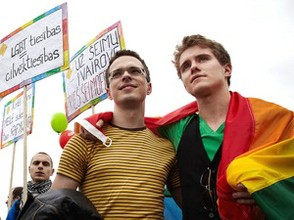
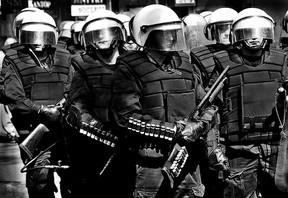 On May 21st 2012, Amnesty International wrote to all of its members asking us to sign a petition to be sent to Riga Council. The local authority for the Latvian capital city was on the verge of cancelling Baltic Pride.
On May 21st 2012, Amnesty International wrote to all of its members asking us to sign a petition to be sent to Riga Council. The local authority for the Latvian capital city was on the verge of cancelling Baltic Pride.

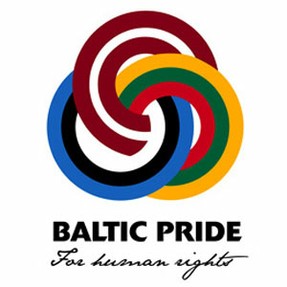 By May 23rd 2012, Riga Council had bowed to international pressure and announced that Baltic Pride will go ahead this year.
By May 23rd 2012, Riga Council had bowed to international pressure and announced that Baltic Pride will go ahead this year.




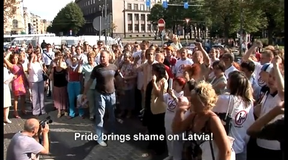 Present at the first Riga Pride march in 2005 was the film-maker Kaspars Goba.
Present at the first Riga Pride march in 2005 was the film-maker Kaspars Goba.






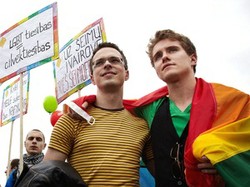

 St Tydecho's Churches in West Waleson 09/03/2014
St Tydecho's Churches in West Waleson 09/03/2014
 Goodies for an Outlander Premiere Partyon 03/06/2015
Goodies for an Outlander Premiere Partyon 03/06/2015
 Holocaust Memorial Day Interview with Rainer Höss, Grandson of Rudolf Architect of Auschwitzon 01/24/2015
Holocaust Memorial Day Interview with Rainer Höss, Grandson of Rudolf Architect of Auschwitzon 01/24/2015
 Romantic Valentine Gifts for an Outlander Fanon 01/16/2015
Romantic Valentine Gifts for an Outlander Fanon 01/16/2015

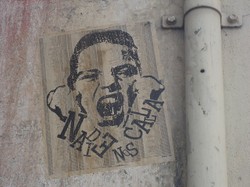
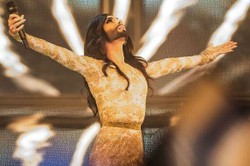
Comments
I'm totally with you on that one! :)
I certainly hope it goes through, and more importantly that people aren't injured. And, I am happy to support them from afar :)